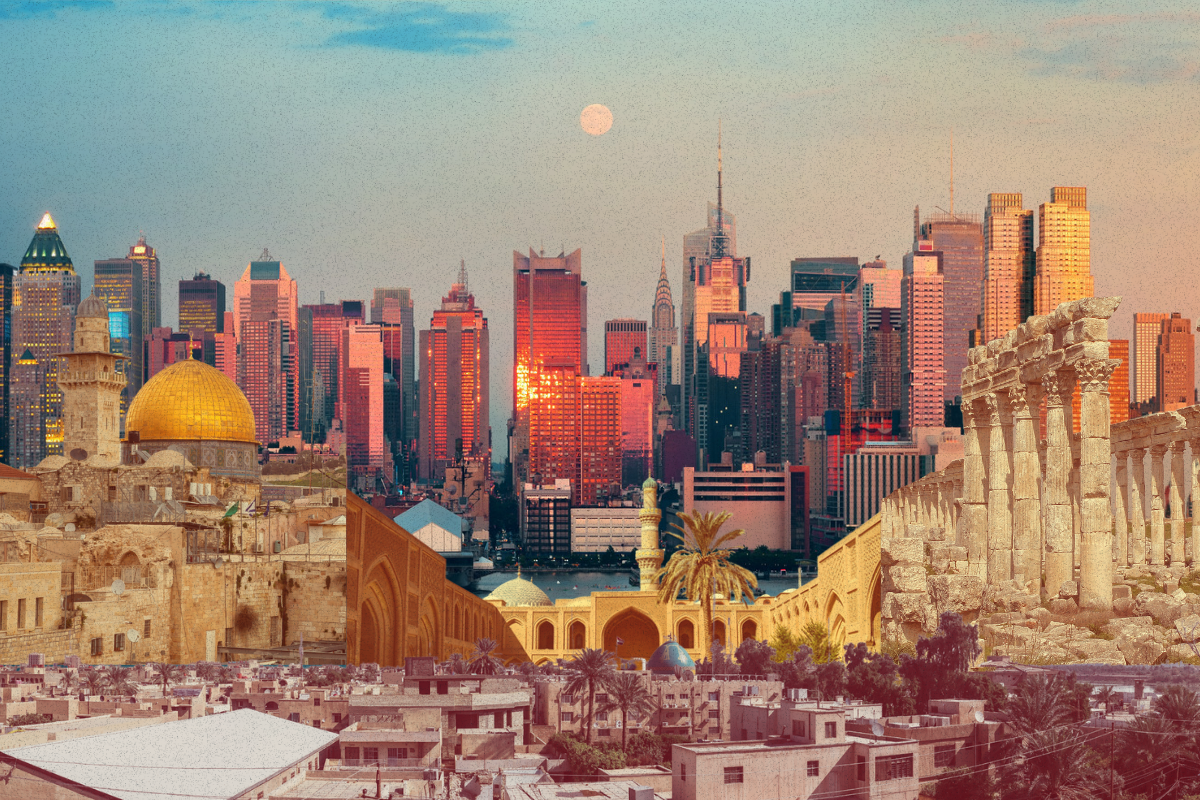When I started at a new company, I was eager for an employee network where I could share my identity outside of my role. As a Sephardic Jew, I was excited to find a recently-formed Middle East and North Africa (MENA) group, full of friendly colleagues who loved their origins in Iraq, Iran, Syria, Morocco and beyond.
Then, a work friend and co-leader of the MENA group invited me to participate in a company spotlight for Arab American Heritage Month (AAHM). If spotlighted, I would be featured on screens throughout the office and on our internal Facebook-style website. I believe that leaning into diversity, equity, inclusion and belonging is important for company culture and reputation, and when I joined the MENA group, I felt grateful for people’s welcoming spirits and appreciation of differences. So, initially, I agreed, excited to be part of the initiative. But as I began writing my responses and reflecting on the label “Arab American,” it felt less and less right.
I love my family’s migration story, which spans various languages, geographies and cultures. My Jewish maternal grandfather fled Aleppo, Syria at the age of 19 (around 1950). As they say, all he had were the clothes on his back. Sadly, to this day, the Syrian government treats their citizens brutally. At the time, they were destroying all marks of Judaism in protest, including the Silvera Synagogue, which my family built. It was not an easy time to be Jewish. Fortunately for my grandfather, he was resilient and made it to Italy, where he had some family. He was able to work, and ultimately built an international business that took him to Japan, where he met my maternal grandmother; they lived, worked, and raised a family in Hong Kong and Brazil. When my mom and her siblings were of college age (late 1980s), the family moved to New York, and Manhattan has been home ever since.
My paternal grandfather’s parents and older brothers lived in Baghdad, Iraq. When life for Jews began to deteriorate and more and more Jews left, his parents decided to move to Israel in the 1930s. He was born in Jerusalem and went on to move to New York. Like many immigrants, he didn’t speak English well and worked tirelessly to build a life for himself in America. (All roads seem to lead to New York.) I often joke that New York City and Israel are the “only” places that will accept my Iraqi Jewish grandfather, my Syrian Jewish grandfather, my German Jewish grandmother, and my Israeli Jewish grandmother.
I had never considered myself Arab American until I was presented with this opportunity: My Jewishness has always come before my Middle Eastern roots, and being American and a woman have been my most defining and pronounced identifiers. But in recent years, with identity (e.g., race, ethnicity, religion, gender, sexual preferences, etc.) taking center stage in American culture, politics, and workplaces, I started to dig into who I am, where I come from, and what I could learn. I discovered a tension in my history — instead of being considered Arab American Jews, Jews from the MENA are considered Sephardic or Mizrahi Jews, in part because in many places, it was Arab-led governments that expelled Jews from the region, or Jews left because of how they were treated. In America, we’ve grouped people poorly and separated them to the point of divisiveness. It was this point that led me to reconsider my participation in AAHM. While I love the rich family history my grandparents have shared with me — stories of migration, resilience, adaptability, loss and second chances — I know that many people aren’t aware of the many Jewish refugees from our part of the world, whose narratives often get lumped into the idea of the “wandering Jew” rather than that of the “refugee.” My family’s story isn’t tidy, and journeys like ours are not widely known, even within Jewish circles.
I am taking Arab American Heritage Month as an opportunity for learning and understanding. I’m trying to connect the dots of many different traditions and experiences across MENA; I’m getting curious and reflective about the current state of the Arab world. I’m also working on reconciling the fact that while 23andme says 66.2% of me is MENA, Jews are not welcomed to live in or visit many parts of the MENA as it stands (there are no Jews in Syria and four in Iraq, based on 2020 data).
The truth is, it’s (quite literally) not “black and white.” People from the MENA region have a long and fascinating history, as well as some of your favorite foods (I’m 99% sure of this). For better or for worse, one cannot transpose the American definitions of race, ethnicity and religion onto this place or people because the lens is dissimilar from that of the United States. People from the MENA, whether they call themselves Arabs or not, are brown, Black and white, Jewish, Muslim and Christian, and all of them belong and deserve to live happily in their ancestral homeland.
I went back and forth on sharing the spotlight for Arab American History Month. It could be a teaching moment, a moment to insert my narrative in a place it belongs no matter how hard people try to erase it, or a moment to be loud, proud, and included. But in the end, I declined because it isn’t my place to hold.



